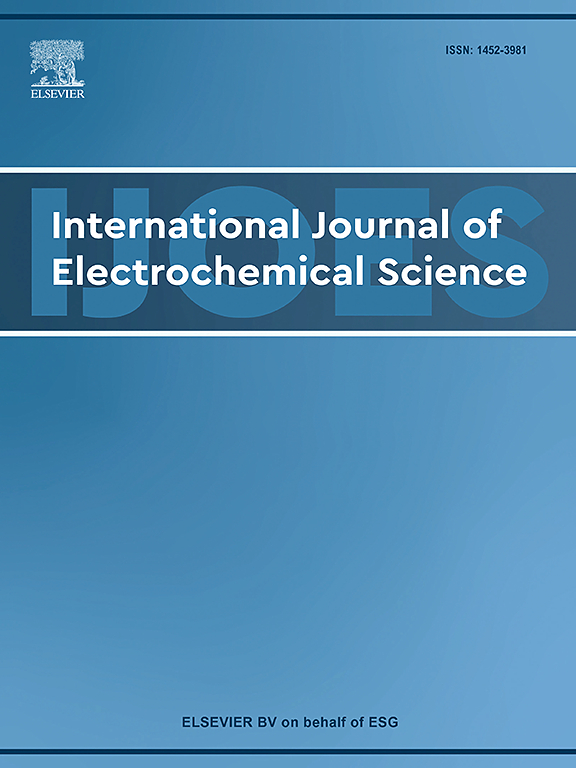催化电fenton法可持续有效降解废水中有害有机化合物的研究进展
IF 1.3
4区 化学
Q4 ELECTROCHEMISTRY
International Journal of Electrochemical Science
Pub Date : 2025-05-02
DOI:10.1016/j.ijoes.2025.101049
引用次数: 0
摘要
顽固性有机污染物(rop),包括工业活动产生的持久性全氟化学品(pfc)和多环芳烃(PAHs),广泛存在于废水中,对环境构成重大威胁。传统的处理方法,如活性污泥消化,往往难以降解这些顽固的污染物,由于其复杂的化学结构和抵抗生物分解。本文综述了电- fenton工艺(EFP)的进展,这是一种利用铁基催化剂(例如,Fe 2 + /Fe³+离子)和外部电来提高ROP降解的有前途的技术。此外,其他基于fenton的工艺,包括光- fenton工艺(pFP)、sono-Fenton工艺(sFP)和光电- fenton工艺(peFP),已经证明了更高的矿化率,并且降低了处理后废水的运营成本和毒性。评估了总运行成本(以每公斤去除COD的成本表示),包括能源需求(每公斤去除COD的千瓦时),以及芬顿催化剂的再生和可重复使用性。此外,基于广泛认可的EFP反应机理,探索了新的动力学,明确了关键操作参数(如pH、电流密度、溶解氧浓度和初始亚铁离子浓度)对羟基自由基(•OH)生成、污染物相互作用和整体降解效率的影响。通过批判性地分析现有研究并强调有前景的优化策略,本工作旨在加强EFP作为废水净化的稳健和可持续解决方案的地位,为更清洁和更健康的水体铺平道路。本文章由计算机程序翻译,如有差异,请以英文原文为准。
Recent advancements in the catalytic electro-fenton process for sustainable and effective degradation of hazardous organic compounds in wastewater
Recalcitrant organic pollutants (ROPs), including persistent perfluorinated chemicals (PFCs) and polycyclic aromatic hydrocarbons (PAHs) from industrial activity, are widespread in wastewater and pose a significant environmental threat. Conventional treatment methods, such as activated sludge digestion, often struggle to degrade these stubborn contaminants due to their complex chemical structures and resistance to biological breakdown. This review examines advancements in electro-Fenton processes (EFP), a promising technology that utilizes iron-based catalysts (e.g., Fe²⁺/Fe³⁺ ions) and external electricity to enhance ROP degradation. Additionally, other Fenton-based processes—including the photo-Fenton process (pFP), sono-Fenton process (sFP), and photo-electro-Fenton process (peFP)—have demonstrated higher mineralization rates, as well as reduced operational costs and toxicity in treated wastewater. The total operating cost (expressed as cost per kilogram of COD removed) was assessed, including energy requirements (kWh per kilogram of COD removed), as well as the regeneration and reusability of the Fenton catalyst. Furthermore, novel kinetics based on the widely recognized EFP reaction mechanism were explored, providing clarity on the effects of critical operational parameters—such as pH, current density, dissolved oxygen concentration, and initial ferrous ion concentration—on hydroxyl radical (•OH) generation, pollutant interactions, and overall degradation efficiency. By critically analyzing existing research and highlighting promising optimization strategies, this work aims to reinforce EFP's position as a robust and sustainable solution for wastewater decontamination, paving the way for cleaner and healthier water bodies.
求助全文
通过发布文献求助,成功后即可免费获取论文全文。
去求助
来源期刊
CiteScore
3.00
自引率
20.00%
发文量
714
审稿时长
2.6 months
期刊介绍:
International Journal of Electrochemical Science is a peer-reviewed, open access journal that publishes original research articles, short communications as well as review articles in all areas of electrochemistry: Scope - Theoretical and Computational Electrochemistry - Processes on Electrodes - Electroanalytical Chemistry and Sensor Science - Corrosion - Electrochemical Energy Conversion and Storage - Electrochemical Engineering - Coatings - Electrochemical Synthesis - Bioelectrochemistry - Molecular Electrochemistry

 求助内容:
求助内容: 应助结果提醒方式:
应助结果提醒方式:


